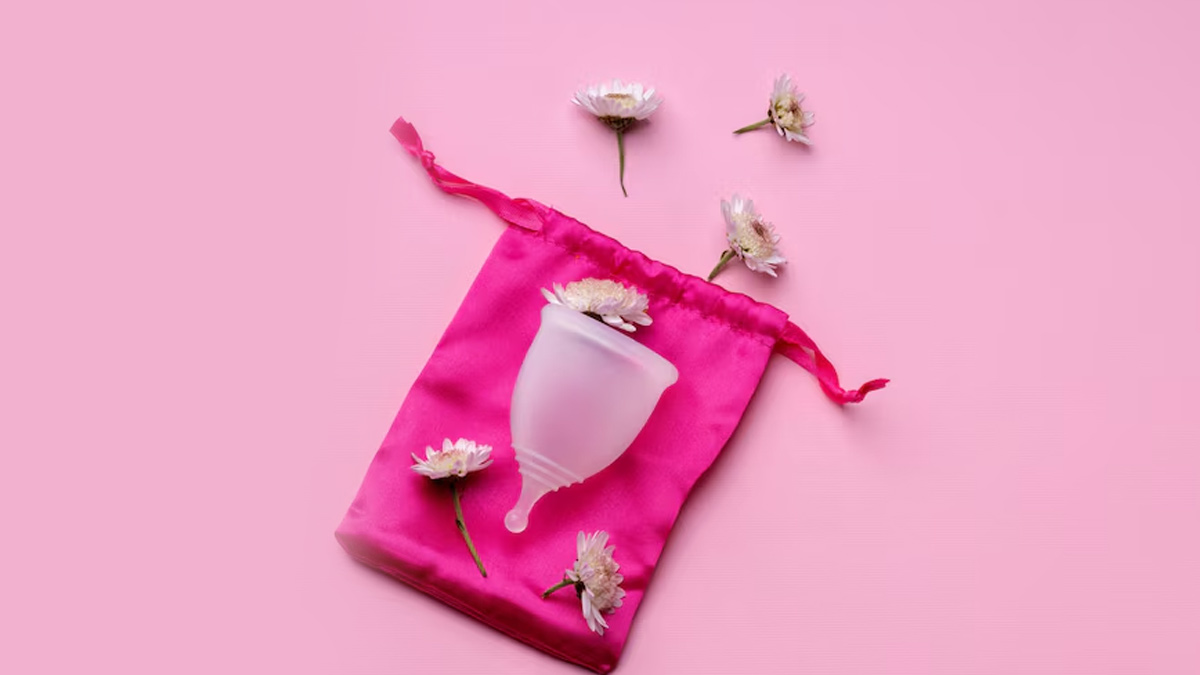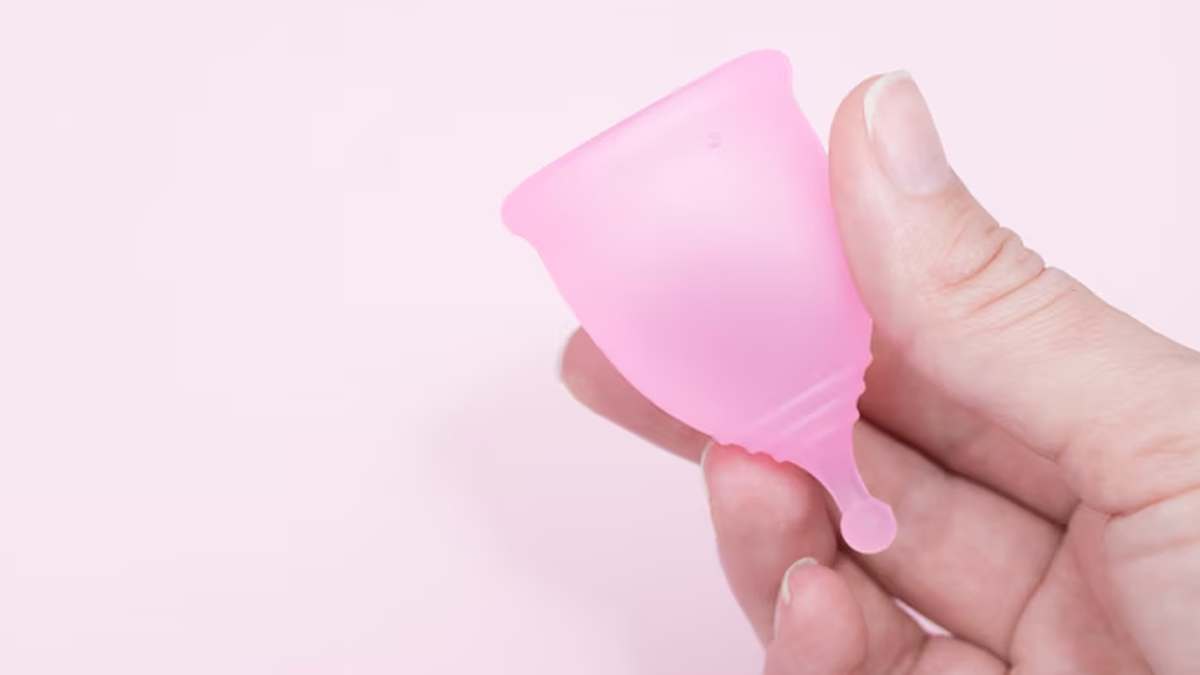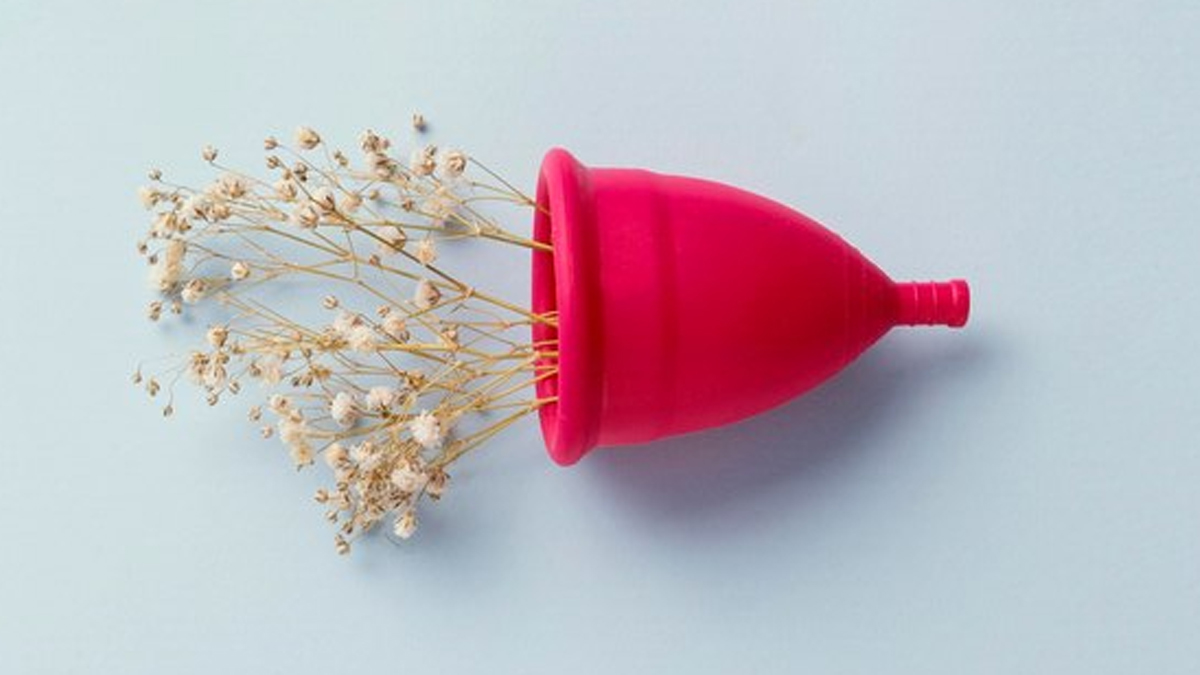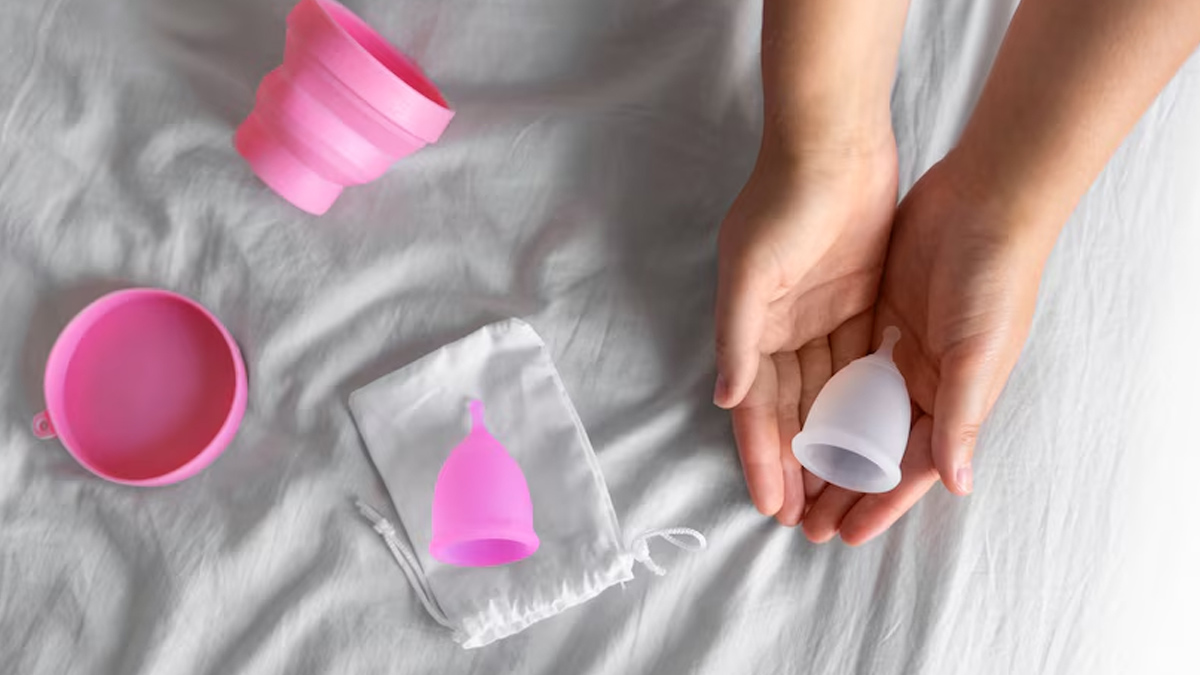
In a world increasingly conscious of sustainability and environmental impact, the products we use daily are under scrutiny, and menstrual care is no exception. Menstrual cup is revolutionary alternative to traditional pads and tampons. In recent years, menstrual cups have gained popularity as an alternative to traditional sanitary products like pads and tampons. Not only do they offer significant health benefits, but they also provide a more sustainable option for managing menstruation.
Table of Content:-
In an interaction with OnlyMyHealth team, Dr Ajeet K Srivastav, PhD in Biochemistry, and Mr Rithish Kumar, Co-Founder of Pee Safe, shed light on the various advantages of using menstrual cups.
Health Benefits

1. Chemical-Free Composition
"Menstrual cups are made from medical-grade silicone, which is free from harmful chemicals, dyes, and fragrances. This reduces the risk of allergies, infections, and irritation often associated with traditional sanitary products that contain synthetic materials and chemicals," explains Dr Srivastav. Unlike some pads and tampons, which may contain bleach or other potentially harmful substances, menstrual cups offer a safer option for women.
2. Comfortable and Leak-Proof
Dr Srivastav points out, "The cups provide a comfortable fit and are designed to be leak-proof, allowing users to engage in various activities without discomfort or worry. They can be worn for up to 12 hours, offering longer protection compared to pads and tampons." This means you can swim, exercise, and go about your daily activities with confidence and comfort.
3. Long-Lasting Protection
"Menstrual cups can collect blood for a longer period of time. They collect blood, instead of absorbing them like tampons or pads. This makes them less irritating, and there is no feeling of dampness," Dr Srivastav added. By preventing the dampness associated with other products, menstrual cups help maintain a healthier vaginal environment, reducing the risk of bacterial growth and infections.
Also read: Menstrual Cup Vs Disc: Expert Lists Pros And Cons For Each Product

4. Hygienic Use
Dr Srivastav also notes, "Menstrual cups don't create a damp or moist environment in the vulva. They keep you hygienic. However, menstrual cups need to be properly sterilised and clean before use to avoid the risk of infections." Proper cleaning and maintenance are crucial for ensuring the hygienic use of menstrual cups, providing a safe and sanitary option for menstrual care.
5. Rash and Odour-Free
One of the significant benefits of menstrual cups is that they are odour-free, rash-free, and leak-free. This is a substantial advantage over pads and tampons, which can sometimes cause irritation or unpleasant odours.
Environmental Benefits

1. Reduction in Waste
Mr Rithish Kumar highlights the environmental impact, stating, "In a world increasingly attuned to the urgency of sustainability, even the most intimate aspects of daily life are analysed for their environmental impact. Enter the menstrual cup—a small, silicone cup that has recently gained fame in the INR 4,500 Crore feminine hygiene market." Unlike disposable products, menstrual cups offer sustainability and convenience. "As per a study, even though approximately 121 million Indian women, or 36% of menstruating women, use sanitary napkins, it generates a staggering 12.3 billion napkins, equivalent to 113,000 tons of waste annually. A pad can take 200-300 years to degrade in the environment. In contrast, a single menstrual cup can last for several years, greatly reducing the environmental burden," Kumar elaborates.
Also read: When Not To Use Menstrual Cups, Expert Explains
2. Resource Conservation
"The production of disposable menstrual products requires significant amounts of resources, including water, energy, and raw materials such as cotton and plastic. By opting for menstrual cups, individuals contribute to resource conservation by minimising the demand for these materials and reducing the environmental impact associated with their extraction and processing," says Kumar. Menstrual cups help conserve essential resources and reduce the ecological footprint of menstrual hygiene management.

3. Lower Carbon Footprint
Kumar further notes, "The life cycle analysis of menstrual cups reveals a lower carbon footprint compared to disposable menstrual products. From manufacturing and distribution to disposal, menstrual cups result in fewer greenhouse gas emissions, making them a more environmentally sustainable choice for menstruators." By choosing menstrual cups, individuals can significantly reduce their carbon footprint, contributing to global efforts to combat climate change.
Conclusion
Menstrual cups present a remarkable solution for both health and environmental concerns associated with traditional menstrual products. Their chemical-free composition, long-lasting protection, and eco-friendly nature make them an excellent choice for women seeking a safer and more sustainable menstrual care option. As Dr Srivastav and Mr Kumar aptly put it, embracing menstrual cups can lead to better health outcomes and a reduced environmental footprint, offering benefits that go beyond mere convenience. The adoption of menstrual cups signifies not only a shift towards greener menstruation practices but also a catalyst for broader conversations around menstrual equity, economic opportunity, and individual well-being.
Also watch this video
How we keep this article up to date:
We work with experts and keep a close eye on the latest in health and wellness. Whenever there is a new research or helpful information, we update our articles with accurate and useful advice.
Current Version
